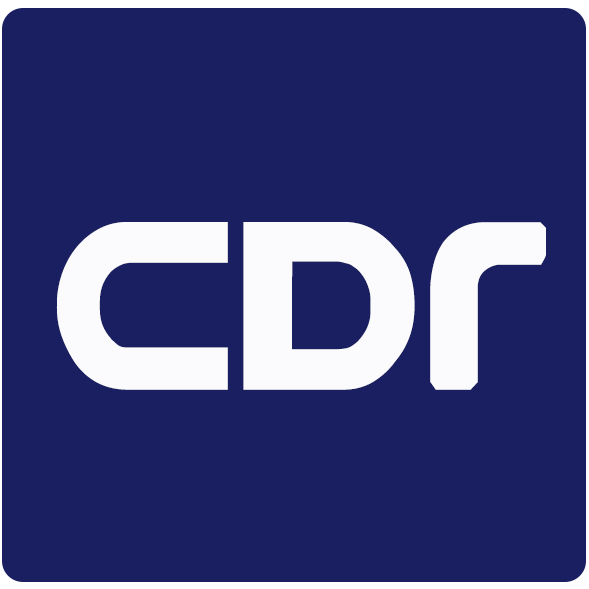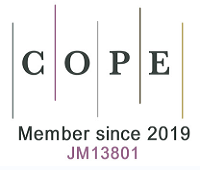REFERENCES
1. Morgenstern DA, Potschger U, Moreno L, Papadakis V, Owens C, et al. Risk stratification of high-risk metastatic neuroblastoma: a report from the HR-NBL-1/SIOPEN study. Pediatr Blood Cancer 2018;65:e27363.
2. Bresler SC, Weiser DA, Huwe PJ, Park JH, Krytska K, et al. ALK mutations confer differential oncogenic activation and sensitivity to ALK inhibition therapy in neuroblastoma. Cancer Cell 2014;26:682-94.
3. De Brouwer S, De Preter K, Kumps C, Zabrocki P, Porcu M, et al. Meta-analysis of neuroblastomas reveals a skewed ALK mutation spectrum in tumors with MYCN amplification. Clin Cancer Res 2010;16:4353-62.
4. Basta NO, Halliday GC, Makin G, Birch J, Feltbower R, et al. Factors associated with recurrence and survival length following relapse in patients with neuroblastoma. Br J Cancer 2016;115:1048-57.
5. Barone G, Anderson J, Pearson AD, Petrie K, Chesler L. New strategies in neuroblastoma: therapeutic targeting of MYCN and ALK. Clin Cancer Res 2013;19:5814-21.
6. Chesler L, Schlieve C, Goldenberg DD, Kenney A, Kim G, et al. Inhibition of phosphatidylinositol 3-kinase destabilizes Mycn protein and blocks malignant progression in neuroblastoma. Cancer Res 2006;66:8139-46.
7. Vaughan L, Clarke PA, Barker K, Chanthery Y, Gustafson CW, et al. Inhibition of mTOR-kinase destabilizes MYCN and is a potential therapy for MYCN-dependent tumors. Oncotarget 2016;7:57525-44.
8. Smith JR, Moreno L, Heaton SP, Chesler L, Pearson AD, et al. Novel pharmacodynamic biomarkers for MYCN protein and PI3K/AKT/mTOR pathway signaling in children with neuroblastoma. Mol Oncol 2016;10:538-52.
9. Buchel G, Carstensen A, Mak KY, Roeschert I, Leen E, et al. Association with aurora-A controls N-MYC-dependent promoter escape and pause release of RNA polymerase II during the cell cycle. Cell Rep 2017;21:3483-97.
10. Brockmann M, Poon E, Berry T, Carstensen A, Deubzer HE, et al. Small molecule inhibitors of aurora-a induce proteasomal degradation of N-myc in childhood neuroblastoma. Cancer Cell 2013;24:75-89.
11. Gustafson WC, Meyerowitz JC, Nekritz EA, Chen J, Benes C, et al. Drugging MYCN through an allosteric transition in Aurora kinase A. Cancer Cell 2014;26:414-27.
12. Otto T, Horn S, Brockmann M, Eilers U, Schuttrumpf L, et al. Stabilization of N-Myc is a critical function of Aurora A in human neuroblastoma. Cancer Cell 2009;15:67-78.
13. DuBois SG, Marachelian A, Fox E, Kudgus RA, Reid JM, et al. Phase I study of the aurora A kinase inhibitor alisertib in combination with irinotecan and temozolomide for patients with relapsed or refractory neuroblastoma: a NANT (new approaches to neuroblastoma therapy) trial. J Clin Oncol 2016;34:1368-75.
14. DuBois SG, Mosse YP, Fox E, Kudgus RA, Reid JM, et al. Phase II trial of alisertib in combination with irinotecan and temozolomide for patients with relapsed or refractory neuroblastoma. Clin Cancer Res 2018;24:6142-9.
15. Moreno L, Caron H, Geoerger B, Eggert A, Schleiermacher G, et al. Accelerating drug development for neuroblastoma - new drug development strategy: an innovative therapies for children with cancer, European network for cancer research in children and adolescents and international society of paediatric oncology Europe neuroblastoma project. Expert Opin Drug Discov 2017;12:801-11.
16. Mosse YP, Fox E, Teachey DT, Reid JM, Safgren SL, et al. A phase II study of alisertib in children with recurrent/refractory solid tumors or leukemia: children’s oncology group phase I and pilot consortium (ADVL0921). Clin Cancer Res 2019;25:3229-38.
17. Moreno L, Marshall LV, Pearson AD, Morland B, Elliott M, et al. A phase I trial of AT9283 (a selective inhibitor of aurora kinases) in children and adolescents with solid tumors: a Cancer Research UK study. Clin Cancer Res 2015;21:267-73.
18. Durbin AD, Zimmerman MW, Dharia NV, Abraham BJ, Iniguez AB, et al. Selective gene dependencies in MYCN-amplified neuroblastoma include the core transcriptional regulatory circuitry. Nat Genet 2018;50:1240-46.
19. Puissant A, Frumm SM, Alexe G, Bassil CF, Qi J, et al. Targeting MYCN in neuroblastoma by BET bromodomain inhibition. Cancer Discov 2013;3:308-23.
20. Yang Z, He N, Zhou Q. Brd4 recruits P-TEFb to chromosomes at late mitosis to promote G1 gene expression and cell cycle progression. Mol Cell Biol, 2008;28:967-76.
21. Loven J, Hoke HA, Lin CY, Lau A, Orlando DA, et al. Selective inhibition of tumor oncogenes by disruption of super-enhancers. Cell 2013;153:320-34.
22. Henssen A, Althoff K, Odersky A, Beckers A, Koche R, et al. Targeting MYCN-driven transcription by BET-bromodomain inhibition. Clin Cancer Res 2016;22:2470-81.
23. Chipumuro E, Marco E, Christensen CL, N. Kwiatkowski N, Zhang T, et al. CDK7 inhibition suppresses super-enhancer-linked oncogenic transcription in MYCN-driven cancer. Cell 2014;159:1126-39.
24. Lucking U, Scholz A, Lienau P, Siemeister G, Kosemund D, et al. Identification of atuveciclib (BAY 1143572), the first highly selective, clinical PTEFb/CDK9 inhibitor for the treatment of cancer. ChemMedChem, 2017;12:1776-93.
25. Walton MI, Eve PD, Hayes A, Valenti MR, De Haven Brandon AK, et al. CCT244747 is a novel potent and selective CHK1 inhibitor with oral efficacy alone and in combination with genotoxic anticancer drugs. Clin Cancer Res 2012;18:5650-61.
26. Dolman ME, Poon E, Ebus ME, den Hartog IJ, van Noesel CJ, et al. Cyclin-dependent kinase inhibitor AT7519 as a potential drug for MYCN-dependent neuroblastoma. Clin Cancer Res, 2015;21:5100-9.
27. Ham J, Costa C, Sano R, Lochmann TL, Sennott EM, et al. Exploitation of the apoptosis-primed state of MYCN-amplified neuroblastoma to develop a potent and specific targeted therapy combination. Cancer Cell 2016;29:159-72.
28. Wang H, Hong B, Li X, Deng K, Li H, et al. JQ1 synergizes with the Bcl-2 inhibitor ABT-263 against MYCN-amplified small cell lung cancer. Oncotarget 2017;8:86312-24.
29. Mosse YP, Laudenslager M, Longo L, Cole KA, Wood A, et al. Identification of ALK as a major familial neuroblastoma predisposition gene. Nature 2008;455:930-5.
30. Janoueix-Lerosey I, Lequin D, Brugieres L, Ribeiro A, de Pontual L, et al. Somatic and germline activating mutations of the ALK kinase receptor in neuroblastoma. Nature 2008;455:967-70.
31. Mosse YP, Lim MS, Voss SD, Wilner K, Ruffner K, et al. Safety and activity of crizotinib for paediatric patients with refractory solid tumours or anaplastic large-cell lymphoma: a Children’s Oncology Group phase 1 consortium study. Lancet Oncol 2013;14:472-80.
32. Chen Y, Takita J, Choi YL, Kato M, Ohira M, et al. Oncogenic mutations of ALK kinase in neuroblastoma. Nature 2008;455:971-4.
33. George RE, Sanda T, Hanna M, Frohling S, Luther W 2nd, et al. Activating mutations in ALK provide a therapeutic target in neuroblastoma. Nature 2008;455:975-8.
34. Berry T, Luther W, Bhatnagar N, Jamin, Poon E, et al. The ALK(F1174L) mutation potentiates the oncogenic activity of MYCN in neuroblastoma. Cancer Cell 2012;22:117-30.
35. Zhu S, Lee JS, Guo F, Shin J, Perez-Atayde AR, et al. Activated ALK collaborates with MYCN in neuroblastoma pathogenesis. Cancer Cell 2012;21:362-73.
36. Umapathy G, El Wakil A, Witek B, Chesler L, Danielson L, et al. The kinase ALK stimulates the kinase ERK5 to promote the expression of the oncogene MYCN in neuroblastoma. Sci Signal 2014;7:ra102.
37. Tucker ER, Tall JR, Danielson LS, Gowan S, Jamin Y, et al. Immunoassays for the quantification of ALK and phosphorylated ALK support the evaluation of on-target ALK inhibitors in neuroblastoma. Mol Oncol 2017;11:996-1006.
38. Guan J, Fransson S, Siaw JT, Treis D, Van den Eynden J, et al. Clinical response of the novel activating ALK-I1171T mutation in neuroblastoma to the ALK inhibitor ceritinib. Cold Spring Harb Mol Case Stud 2018;4.
39. Bresler SC, Wood AC, Haglund EA, Courtright J, Belcastro LT, et al. Differential inhibitor sensitivity of anaplastic lymphoma kinase variants found in neuroblastoma. Sci Transl Med, 2011;3:108ra114.
40. Guan J, Tucker ER, Wan H, Chand D, Danielson LS, et al. The ALK inhibitor PF-06463922 is effective as a single agent in neuroblastoma driven by expression of ALK and MYCN. Dis Model Mech 2016;9:941-52.
41. Infarinato NR, Park JH, Krytska K, Ryles HT, Sano R, et al. The ALK/ROS1 inhibitor PF-06463922 overcomes primary resistance to crizotinib in ALK-driven neuroblastoma. Cancer Discov 2016;6:96-107.
42. Johnson TW, Richardson PF, Bailey S, Brooun A, Burke BJ, et al. Discovery of (10R)-7-amino-12-fluoro-2,10,16-trimethyl-15-oxo-10,15,16,17-tetrahydro-2H-8,4-(m etheno)pyrazolo[4,3-h][2,5,11]-benzoxadiazacyclotetradecine-3-carbonitrile (PF-06463922), a macrocyclic inhibitor of anaplastic lymphoma kinase (ALK) and c-ros oncogene 1 (ROS1) with preclinical brain exposure and broad-spectrum potency against ALK-resistant mutations. J Med Chem 2014;57:4720-44.
43. Heath JA, Campbel MA, Thomas A, Solomon B. Good clinical response to alectinib, a second generation ALK inhibitor, in refractory neuroblastoma. Pediatr Blood Cancer 2018;65:e27055.
44. Pacenta HL, Macy ME. Entrectinib and other ALK/TRK inhibitors for the treatment of neuroblastoma. Drug Des Devel Ther 2018;12:3549-61.
45. Lambertz I, Kumps C, Claeys S, Lindner S, Beckers A, et al. Upregulation of MAPK negative feedback regulators and RET in mutant ALK neuroblastoma: implications for targeted treatment. Clin Cancer Res 2015;21:3327-39.
46. Krytska K, Ryles HT, Sano R, Raman P, Infarinato NR, et al. Crizotinib Synergizes with chemotherapy in preclinical models of neuroblastoma. Clin Cancer Res 2016;22:948-60.
47. Carr-Wilkinson J, O’Toole K, Wood KM, Challen CC, Baker AG, et al. High frequency of p53/MDM2/p14ARF pathway abnormalities in relapsed neuroblastoma. Clin Cancer Res 2010;16:1108-18.
48. Yoda S, Lin JJ, Lawrence MS, Burke BJ, Friboulet L, et al. Sequential ALK inhibitors can select for lorlatinib-resistant compound ALK mutations in ALK-positive lung cancer. Cancer Discov 2018;8:714-29.
49. Shaw AT, Friboulet L, Leshchiner I, Gainor JF, Bergqvist S, et al. Resensitization to crizotinib by the lorlatinib ALK resistance mutation L1198F. N Engl J Med 2016;374:54-61.
50. Debruyne DN, Bhatnagar N, Sharma B, Luther W, Moore NF, et al. ALK inhibitor resistance in ALK(F1174L)-driven neuroblastoma is associated with AXL activation and induction of EMT. Oncogene 2016;35:3681-91.
51. Redaelli S, Ceccon M, Zappa M, Sharma GG, Mastini C, et al. Lorlatinib treatment elicits multiple on- and off-target mechanisms of resistance in ALK-driven cancer. Cancer Res 2018;78:6866-80.
52. Padovan-Merhar OM, Raman P, Ostrovnaya I, Kalletla K, Rubnitz KR, et al. Enrichment of targetable mutations in the relapsed neuroblastoma genome. PLoS Genet 2016;12:e1006501.
53. Chen L, Humphreys A, Turnbull L, Bellini A, Schleiermacher G, et al. Identification of different ALK mutations in a pair of neuroblastoma cell lines established at diagnosis and relapse. Oncotarget 2016;7:87301-11.
54. Eleveld TF, Oldridge DA, Bernard V, Koster J, Colmet Daage L, et al. Relapsed neuroblastomas show frequent RAS-MAPK pathway mutations. Nat Genet 2015;47:864-71.
55. Schleiermacher G, Javanmardi N, Bernard V, Leroy Q, Cappo J, et al. Emergence of new ALK mutations at relapse of neuroblastoma. J Clin Oncol 2014;32:2727-34.
56. Umapathy G, Guan J, Gustafsson DE, Javanmardi N, Cervantes-Madrid D, et al. MEK inhibitor trametinib does not prevent the growth of anaplastic lymphoma kinase (ALK)-addicted neuroblastomas. Sci Signal, 2017;10.
57. Wood AC, Krytska K, Ryles HT, Infarinato NR, Sano R, et al. Dual ALK and CDK4/6 inhibition demonstrates synergy against neuroblastoma. Clin Cancer Res 2017;23:2856-68.
58. Moore NF, Azarova AM, Bhatnagar N, Ross KN, Drake LE, et al. Molecular rationale for the use of PI3K/AKT/mTOR pathway inhibitors in combination with crizotinib in ALK-mutated neuroblastoma. Oncotarget 2014;5:8737-49.
59. Schonherr C, Ruuth K, Kamaraj S, Wang CL, Yang HL, et al. Anaplastic lymphoma kinase (ALK) regulates initiation of transcription of MYCN in neuroblastoma cells. Oncogene 2012;31:5193-200.
60. Claeys S, Denecker G, Durinck K, Decaesteker B, Mus LM, et al. ALK positively regulates MYCN activity through repression of HBP1 expression. Oncogene 2019;38:2690-705.
61. Escamilla-Powers JR, Daniel CJ, Farrell A, Taylor K, Zhang X, et al. The tumor suppressor protein HBP1 is a novel c-myc-binding protein that negatively regulates c-myc transcriptional activity. J Biol Chem 2010;285:4847-58.











